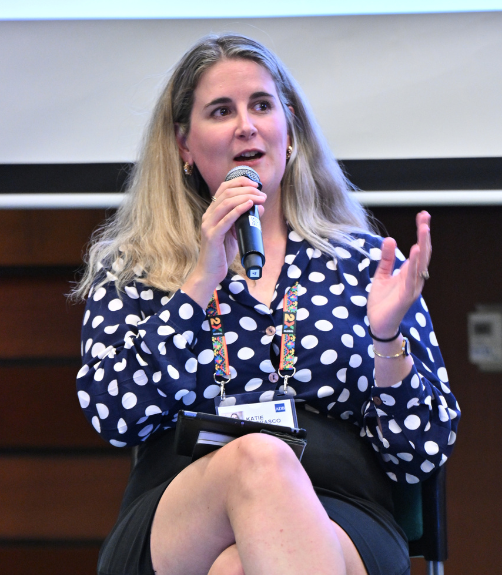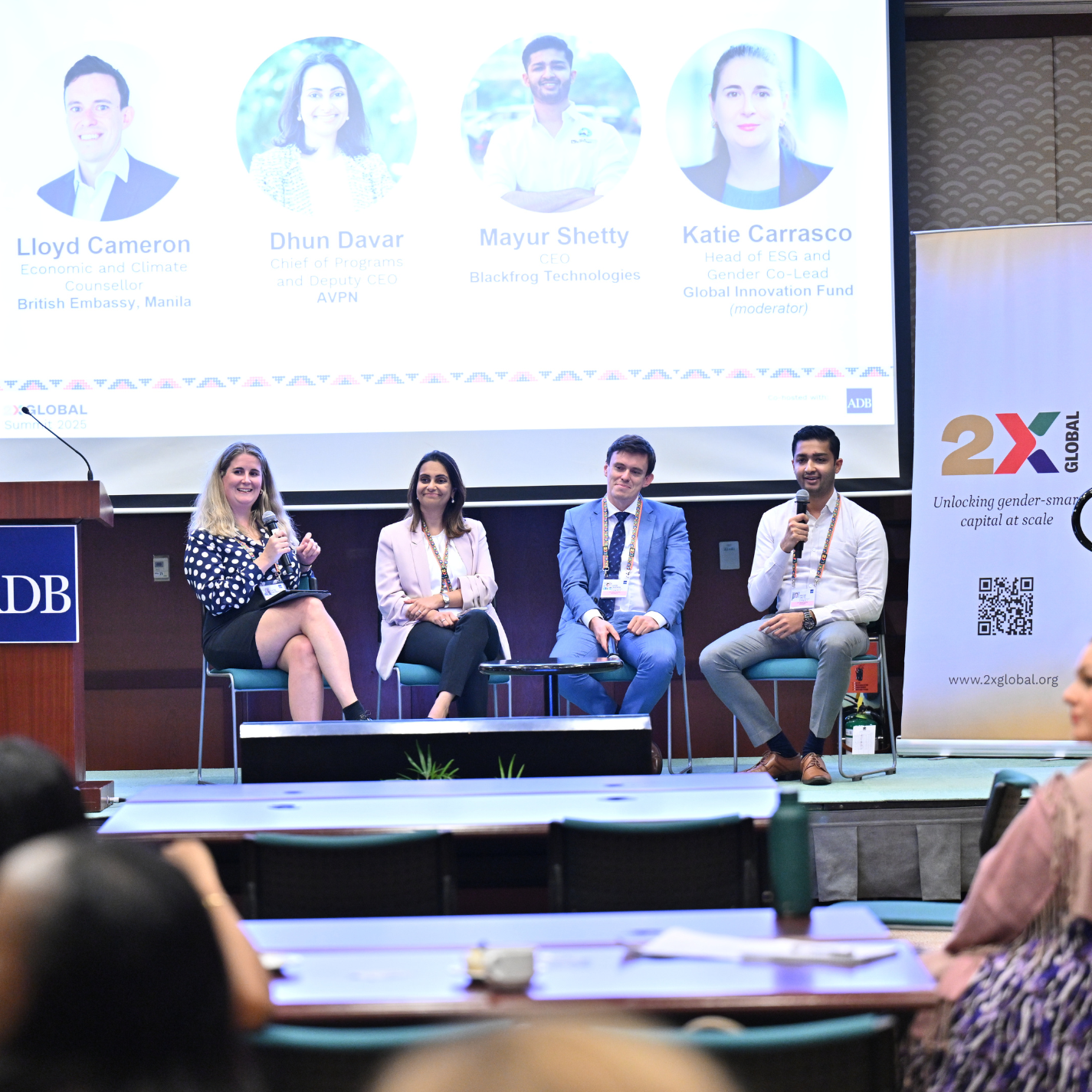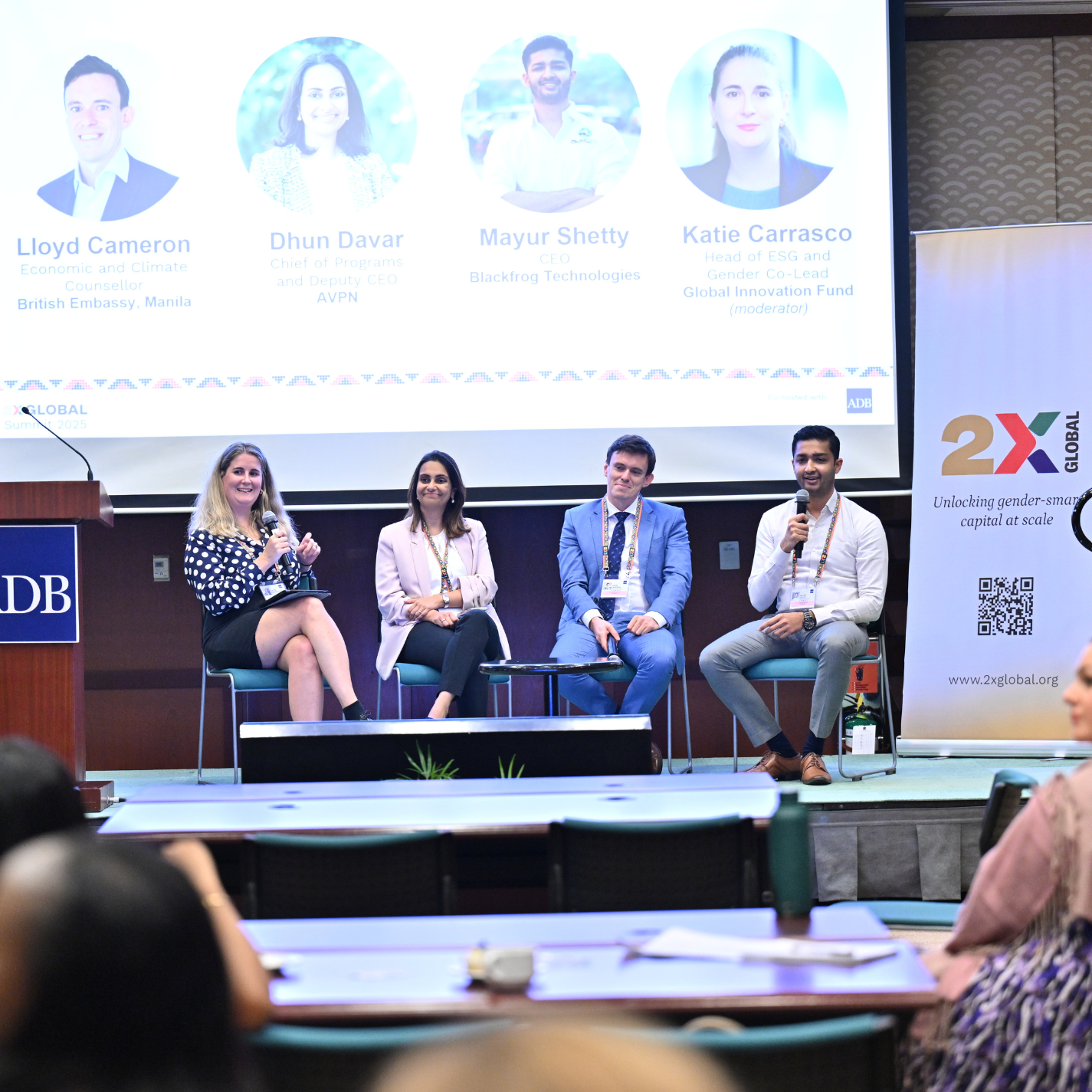Gender, climate and health: Building resilience through innovation and collaboration.
By Katie Carrasco
Sep 11, 2025
The 2025 2X Global Summit, hosted last week in Manila, brought together leaders, innovators, and policymakers under the theme Women driving resilience. The event highlighted how women’s adaptability and ingenuity are central to tackling global challenges, from climate change to digital transformation, and how gender-smart approaches can unlock more inclusive and lasting impact.
As part of the programme, GIF co-hosted a panel with AVPN on Strengthening health systems for climate resilience: A gender lens approach. Moderated by GIF’s Managing Director, ESG and Gender, Katie Carrasco, the discussion featured perspectives from Lloyd Cameron (FCDO, British Embassy Manila), Dhun Davar (AVPN), and Mayur Shetty (Blackfrog Technologies).
Key insights
Climate change is a health crisis
Rising temperatures and extreme weather are driving increased mortality, food insecurity, mental health pressures, and higher risks of gender-based violence. Women, girls and gender-diverse people are disproportionately impacted due to unequal access to healthcare, limited decision-making power, caregiving responsibilities and entrenched social norms.
Gender plays a decisive role in shaping how communities experience and recover from climate-related shocks. Addressing health and climate without accounting for gender risks leaves the most vulnerable behind.

Context and inclusivity matter
Although some climate-related health risks are universal, panellists underscored the importance of context-specific and gender-responsive solutions. Lloyd Cameron pointed to local-level collaboration in the Philippines, where government units in Negros Island are using local data to help ensure climate and health policies reflect community needs.
From the innovation perspective, Mayur Shetty shared how Blackfrog’s first design of Emvólio, a portable cooling device for vaccines, failed to meet the needs of women frontline health workers. Redesigning the product in response to user feedback not only improved usability but also highlighted the importance of inclusive design processes.
At GIF, we use our Gender toolkit to bring the same lens to funding decisions. By applying tools such as our Gender equality framework and Gender marker, we can analyse whether innovations directly advance gender equality or, even when focused on other outcomes, embed gender-sensitive design. This approach helps ensure impact is measured holistically.Innovation as a driver of resilience
Innovative solutions that are agile, adaptable to changing realities and locally led are critical to achieving impact. There is a growing number of locally designed innovations focused on climate and health challenges emerging, which GIF and AVPN’s Lighthouse Fund are supporting to scale. Blackfrog’s Emvólio demonstrates how technologies designed for one purpose can also be deployed more broadly to meet evolving needs.
Innovation also offers opportunities to bypass systemic barriers, including entrenched gender inequities in medicine. When designed for flexibility, new solutions can open alternative pathways for women to participate as leaders, innovators, and frontline workers.
Financing innovation: blended and patient capital
Patient, impact-first funding, which takes a long term approach, provides innovators with the time that’s required to deliver impact. Philanthropic and development funding helps de-risk early-stage ideas, laying the groundwork for private capital to follow.
GIF’s support for Blackfrog’s expansion from India into East Africa was one example Mayur Shetty gave of how patient capital can help scale promising solutions across contexts. Thrive, GIF’s blended finance vehicle developed in partnership with PATH, combines patient capital and catalytic technical support to scale innovations that build climate resilience in health systems and communities. Over the next five years our goal is to deploy over $120 million in private sector innovations to improve climate-health resilience for 100 million people.
Collaboration as the foundation
Policymakers, funders, and innovators each bring different capabilities, and progress depends on aligning them. This is especially true where scaling innovation requires not just financial resources, but legitimacy, policy support, and local buy-in. Collaboration is essential.

Takeaways
Three clear lessons stood out:
Context and evidence must guide action. Locally-led and robust data is essential for identifying, and scaling innovations that meet real needs. Discussion with the audience told us that researchers have the data and expertise and as funders we need to use it to invest innovation.
Gender-responsive design is not a ‘nice-to-have’ but has real and positive outcomes through strengthening resilience and effectiveness. Many in our audience at 2X hadn’t recognised the interconnection between climate, health and gender but were already working in this joined-up field. We need to work on how we frame the relationship between the three fields and embed it in our work.
Collaboration unlocks scale. Cross-sector partnerships from blended finance to community engagement are the foundation of progress in a field with a promising trajectory.
The intersection of climate, gender, and health is urgent but also full of possibility. By combining innovation, inclusive design, patient capital, and strong partnerships, we can build health systems that are not only more resilient to climate shocks but also more equitable in their outcomes.
